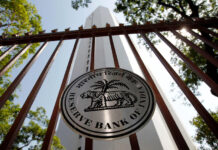The Budget was a big letdown on realistic allocations in the social sector, particularly health
For all the emphasis on “ease of living” and “ease of doing” indices that peppered the budget liberally, there was hardly any mention of what people needed to get there in the first place — basic life indices. So the Budget was a big letdown when it came to social sector spending specifics, health and education in particular. With nothing visionary except a larger reiteration of continuity that Ayushman Bharat and well-nourished children are among the Government’s Laqshya vision, one wondered why Finance Minister Nirmala Sitharaman had no care for Modicare. Beyond the 15 per cent increase in total health outlay this year, micro particles, like reducing costs on kidney dialysers and possibly skilling programmes that could build an army of paramedics, there was nothing much to write home about, certainly nothing to show increasing public expenditure on health to cross the current spending of 1.5 per cent of GDP. This is lower than neighbours like Afghanistan, which spends 8.2 per cent, Maldives 13.7 per cent and Nepal 5.8 per cent respectively. Considering the Economic Survey has also emphasised on inaccessible healthcare in rural India with most primary health centres having only one doctor and out-of-pocket expense among the highest in the world, one was hoping the Budget would at least talk about taking the Ayushman Bharat forward. As it is, its implementation is facing hurdles with questions about private facilities not agreeing to flat pricing. Promised hospital upgrades never take off in reality in a time-bound manner. There are no specifics on where the money for healthcare will come from. Neither was there any mention of the cost of medicines, incentives for generic drugs or AYUSH services under a single roof, all of which were promised in the vote-on-account in January. The allocation for prevention and control of cancer, diabetes, cardio-vascular disease and stroke was reduced to Rs 175 crore from Rs 295 crore.
Equally the math just doesn’t add up on the education sector. Of course, there are promising mission mode statements like a national education policy, a National Research Foundation to promote research and innovation, setting up a world-class institution, a higher education commission, bringing in foreign students and a push in online courses. But all Sitharaman committed was that the allocation for education for 2019-20 will be more than three times the revised estimates. The share of education was 3.5 per cent of the GDP last time. While talk of excellence is good, one has got to look into the larger spread of quality higher education in the penumbra of IITs and IIMs and ensure enrolment of quality students and staff. Without that, the army of domain experts that Sitharaman hopes to raise for the service sector in major overseas economies will remain a pipedream. Education needs a big push in investment from the private sector and we all know how this bit is not an outcome of economic growth and needs to be incentivised. Instead, economic growth depends on educational development and, hence, investment in education. Even if private entities do invest, a share has to be taken up by the State to check profiteering. The two other positive takeaways include a boost for social welfare enterprises and definitely prioritising women-led initiatives in the economy, particularly loans to self-help groups. The social sector traditionally has always been shortchanged in the Budget but when you reduce it to empty sloganeering, there can never be sabka vikas.






























